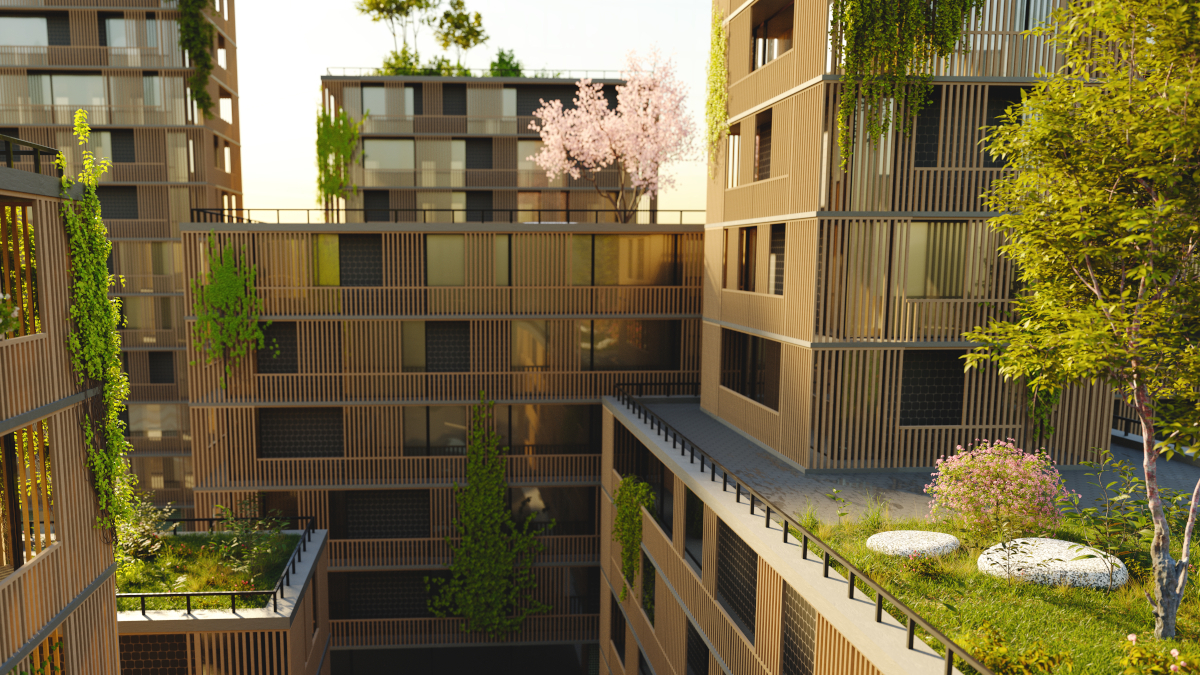Call for papers: Scalable solutions for circularity in the built environment
Published in Civil Engineering and Mechanical Engineering

Collection Overview
Design for a circular economy prioritises keeping materials at their highest value possible. Strategies include extending the life of existing built environment assets, urban mining, design for future adaptation, deconstruction and reuse, and investigating different approaches to upcycle, recycle and downcycle resources to reduce new material extraction, minimise emissions and waste.
This collection in Communications Engineering invites original research articles that explore scalable solutions for the implementation of circularity principles in the built environment. We’re interested in all elements of the built environment, including buildings (residential and non-residential) and infrastructure (e.g. roads and pavements, railways, bridges, tunnels, green infrastructure).
For circularity solutions to have a meaningful impact on resource consumption and waste reduction they need to be scalable. Papers in this collection must therefore consider implementation, as a minimum, at a regional scale. This could for example entail considering resources, e.g. bricks, forecast to be available for reuse within a city, and how this could impact upon localised new demand for that resource. We also encourage analysis of the potential scalability of proposed solutions and scenario modelling of circularity impacts at national scales.
Manuscripts should fall within the scope of the collection and of Communications Engineering more generally. We are welcoming submissions from all authors until 24th March 2026.
Areas of interest include:
● Scalable waste / sustainable resource recovery and utilization, including reuse / waste valorization for buildings and infrastructure (with waste or reuse volumes available being sufficient to be impactful at a regional level).
● Design of assets, construction materials, buildings and infrastructure for circularity at the regional / national scale, e.g. design for adaptability, deconstruction and reuse, sustainable construction.
● Digital tools and modelling techniques to support circularity (e.g. digital twins, material stock and flow modelling, materials passports).
Why is this collection important?
The built environment is a significant producer of greenhouse gas emissions, one of the largest producers of waste, and a major consumer of new resources. With global floorspace projected to continue to rapidly increase over the coming decades these impacts will only continue. The circular economy offers an opportunity to reduce these impacts by making the best use of materials that have already been extracted, designing to keep resources in use over multiple lifecycles and utilising materials currently considered as waste as the feedstock for new production. This collection aims to collate globally leading work on built environment circularity to highlight the potential solutions and research gaps that must be addressed to achieve a sustainable built
Circularity is a key strategy to reduce the environmental impacts of the built environment
- This Collection supports and amplifies research directly related to the United Nation's Sustainable Development Goal 9, 11, and 12 (SDG 7, 11, and 12) – Industries and Innovation, Sustainable Cities, and Consumption and Production.
Why submit to a collection?
Collections like this one help promote high-quality science. They are led by Guest Editors and In-House Editors who are experts in their fields and supported by a dedicated team of Commissioning Editors and Managing Editors at Springer Nature. Collection manuscripts typically see higher citations, downloads, and Altmetric scores, and provide a one-stop-shop on a cutting-edge topic of interest.
Who is involved?
Susan A. Bernal Lopez, PhD, University of Bath, United Kingdom
Susan is Professor of Sustainable Construction Materials at the University of Bath, UK. Her research centres on novel cement materials development, waste management and valorisation in construction, durability of construction materials, and sustainability assessment of novel cement and concrete technologies. She served in the RILEM Association as Convener of the Cluster A: Materials Processing and Characterization.
Danielle Densley Tingley, PhD, University of Sheffield, United Kingdom
Danielle is a Professor of Circular Construction in the School of Mechanical, Aerospace and Civil Engineering at the University of Sheffield. She is the lead investigator of BuildZero, a £6M UK Research Councils investment, which will explore whether the needs of UK buildings can be met with zero raw material extraction, zero carbon and zero waste.
Communications Engineering is edited by both in-house professional editors and Editorial Board Members.
How can I submit my paper?
Visit the Collection page to find out more about this collection and submit your article.
Follow the Topic
-
Communications Engineering

A selective open access journal from Nature Portfolio publishing high-quality research, reviews and commentary in all areas of engineering.
Related Collections
With Collections, you can get published faster and increase your visibility.
Applications of magnetic particles in biomedical imaging, diagnostics and therapies
Publishing Model: Open Access
Deadline: Dec 31, 2025
Integrated Photonics for High-Speed Wireless Communication
Publishing Model: Open Access
Deadline: Dec 31, 2025





Please sign in or register for FREE
If you are a registered user on Research Communities by Springer Nature, please sign in